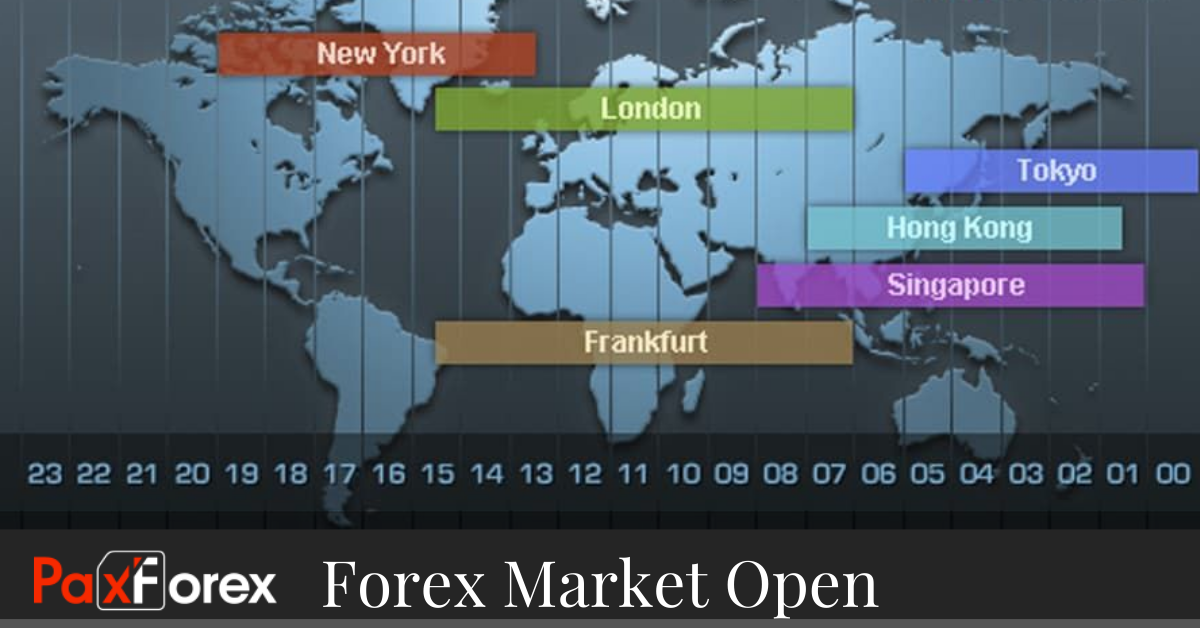
Given the global nature of currency trading, the forex market is open for business around the clock, 24 hours a day 5 days a week. The forex market is a global decentralized market for the trading of currencies. This includes all aspects of buying, selling and exchanging currencies at current or determined prices. In terms of volume of trading, it is by far the largest market in the world. The main participants in this market are the larger international banks. Financial centres around the world function as anchors of trading between a wide range of multiple types of buyers and sellers around the clock, with the exception of weekends.
The foreign exchange markets isn't dominated by a single market exchange, but involves a global network of computers and brokers from around the world. Central banks use their massive buying and selling capabilities to alter exchange rates through their open market activities and in many cases will do so not with profit in mind, but rather for any number of policy reasons. Forex brokers act as market makers as well, and may post bid and ask prices for a currency pair that differs from the most competitive bid in the market.
Many new forex traders hit the market running. They watch various economic calendars and trade voraciously on every release of data, viewing the 24-hours-a-day, five days a week foreign exchange market as a convenient way to trade all day long. Not only can this strategy deplete a trader's reserves quickly, but it can burn out even the most persistent trader. Unlike Wall Street, which runs on normal business hours, the forex market runs on the normal business hours of four different parts of the world and their respective time zones, which means the trading day lasts all day and night.
Currency trading is unique because of its hours of operation. The week begins at 6pm EST on Sunday and runs until 4pm on Friday. But not all hours of the day are equally good for trading. The best time to trade is when the market is most active. When more than one of the four markets are open simultaneously, there will be a heightened trading atmosphere, which means there will be greater fluctuation in currency pairs. When only one market is open, currency pairs tend to get locked in a tight pip spread of roughly 30 pips of movement.
Forex Trading Sessions
- Asian Trading Session 21:00 — 8:00 (GMT)
- European Trading Session 8:00 — 17:00 (GMT)
- North American Trading Session 13:00 — 22:00 (GMT)
To know the schedule of trading sessions in the forex market means being able to rationally allocate one’s efforts and effectively use one’s possibilities and time. As it is well-known, Forex working hours are unlimited and it functions round the clock. When the evening begins in one part of the world, in another part - the morning comes and the local currency market starts working. Sessions come one after another, or partially superimpose on one another, giving traders a possibility to trade whenever convenient to them.
After the weekend, liquidity returns to forex during the Asian session. The market is operating through financial centers in Japan, China, Australia, New Zealand, and Russia at this time, among others. Asian is the first market to open and many large participants use the trade momentum there to develop their strategies and as a gauge for future market dynamics. Approximately 6% of the world’s forex transactions are enacted in the Asian Trading Session. The most traded currencies during this time is the Japanese Yen.
The European Trading Session operates through a number of major financial centers, including Paris, Frankfurt, Zurich, and London. London is the largest financial center in the world, trading nearly 34% of all forex transactions. With such a heavy trade volume, the European Session experiences some of the largest moves in the market. The most active currencies in this session are the GBP, EUR, and CHF. The volatility of the most popular currency pairs increases significantly after the London forex online market starts its session.
The North American Session is dominated by U.S. transactions, with contributive trades coming from Canada, Mexico, and South America. Volatility hits its peak in New York City, where fundamental factors drive the US Dollar and Canadian Dollar. The majority of the transactions in New York occurs during the US/Europe overlap; with transactions slowing as liquidity dries up and European traders exit the market. Since nearly 85% of all forex trades involve the US Dollar, this session has been known to generate tremendous moves in the market.
You may have noticed when reading the previous section that at several times of the day more than one market is open at the same time. These overlapping times usually provide the greatest degree of liquidity in certain currency pairs, as well as wider pip range movements. This tends to make these more liquid periods better times to trade, theoretically at least. Basically, since more liquidity and a higher volume of trades will often be more beneficial to the speculative forex trader, certain times when trading is heavier in particular currency pairs can give a trader the edge needed to be profitable.
On most Sunday opens, prices generally pick up where they left off on Friday afternoon. The opening price spreads will be much wider than normal because only Wellington and 24-hour trading desks are active at the time. When banks in Sydney, Australia, and other early Asian centers enter the market over the next few hours, liquidity begins to improve and price spreads begin to narrow to more normal levels. Because of the wider price spreads in the initial hours of the Sunday open, most online trading platforms don't begin trading until 5 p.m. ET on Sundays, when sufficient liquidity enables the platforms to offer their normal price quotes.







